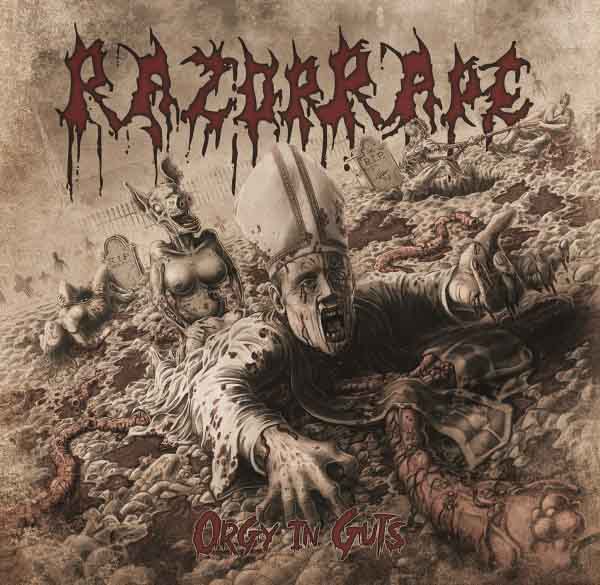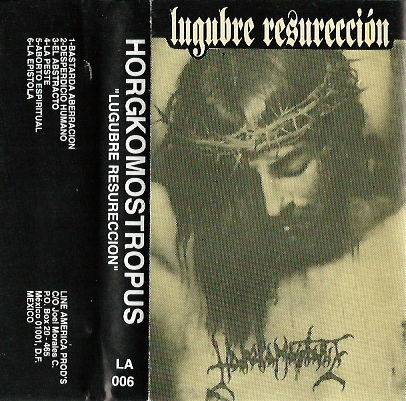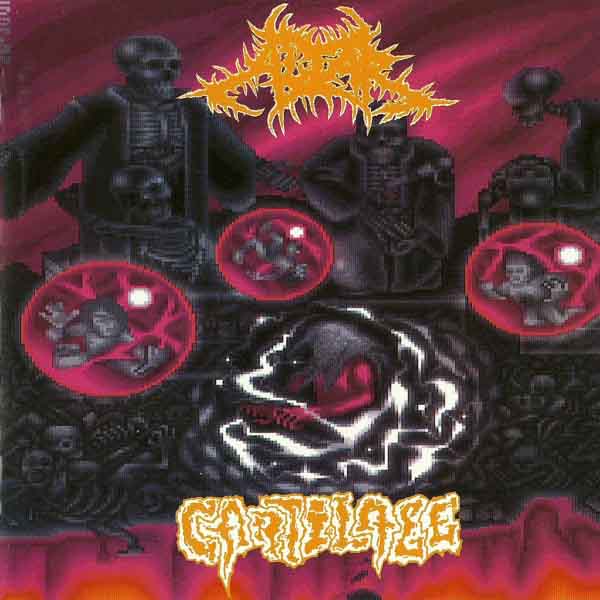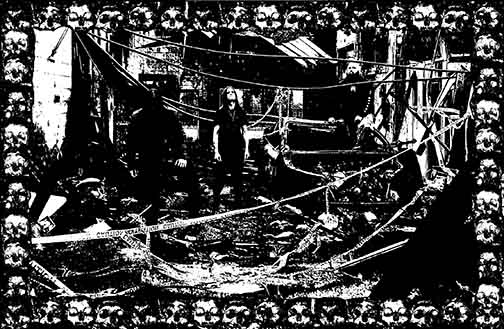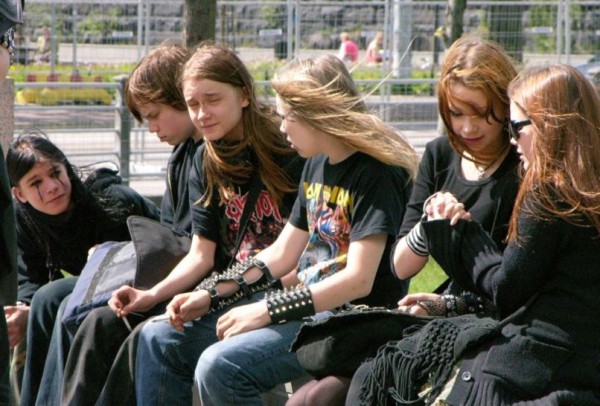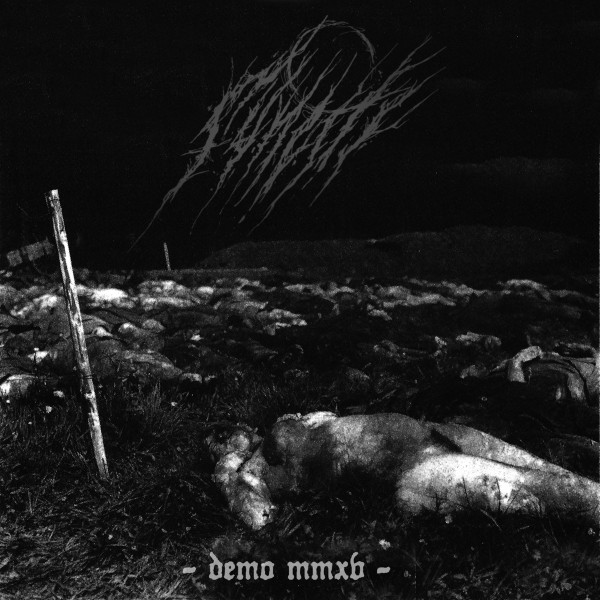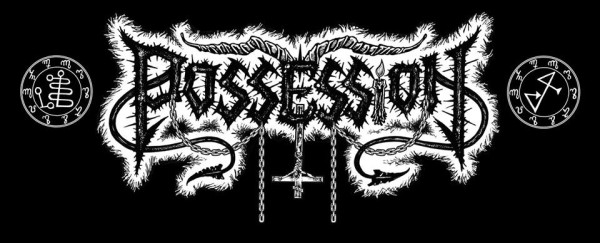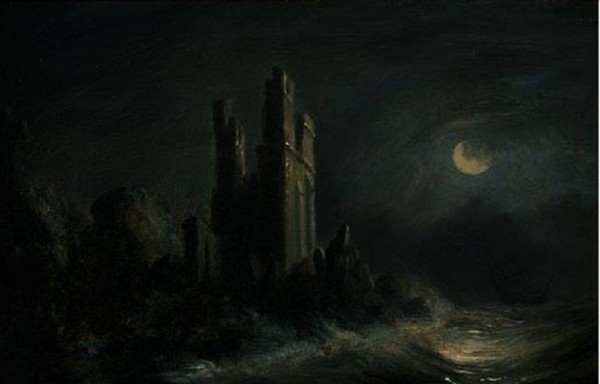
The metal genre has been through an accelerated evolution through the course of 45 years in which it has seen itself renewed once and again. Each reincarnation representing a distillation of its essence. This process of stripping down rock-genre influences and following the path laid down by Black Sabbath in terms of spirit and methodology in composition hit rock bottom with black metal in or around 1994 (a precise date cannot be pinpointed, but this is a good marker). The meaning of this is not that black metal is superior to the rest of the metal genres (or subgenres, whatever you want to call them), this would be incurring in the mistake in appreciation we are here, in part, trying to correct and a misunderstanding of what evolution means. The ideal black metal shows little trace of having had any connection to rock at any level apart from its general instrumentation. This is similar to how rock music uses almost exactly the same instrumentation as jazz but we would never lump the two together. Thus, metal established itself as a completely differentiated genre.
What followed was a constant attempt at superficially injecting doses of alleged boundary-pushing elements that only resulted in either hardcore or rock outfits adopting metal riffs and vocals, or in avant-garde-isms that did away with what makes metal what it is and often did not build something of their own but just made an embarrassing disaster out of the music (see later Deathspell Omega). In part, this has come from a desperate and hopeless allegiance to the Cult of Novelty which comes from a misappreciation of the growth process of metal from Black Sabbath’s debut to the different branches into which it is said to have evolved. It is because in general this evolution is seen as a branching out in which each separate style is guided by a so-called innovation or separation (which in most cases was only a superficial distinction) that it has not been made clear that in fact metal’s real development has been an almost straight line towards death and black metal. Incorrectly including Led Zeppelin and AC/DC in the metal canon is also a grave mistake that leads to a misunderstanding of metal, in fact it is precisely this that leads to the loose definition that metal is a “loud music genre that uses distorted electric guitars and drums to sing about shocking topics”. To move on, we must first do away with such contemptible attempts at construing the genre and look towards deeper and more complex definitions as metal is not, as many seem to believe, undefinable, as it is said of love and hate.
What metal needs is to come into maturity. Contrary to what many still believe, that metal should keep playing the game of trying to present something new, the retro camp got something right in their lazy pessimism: everything has already been done, every riff, every melody, every variation. Well, not right, but it hints to a truth. The truth that there is only so much variation you can achieve through thinking superficially, thinking in terms of making something “interesting” in the sense of being “different” or “catchy”, which in disguise is what even nu-underground bands like Blaze of Perdition are doing. Under it all, there is a very simple backbone to a messy presentation and deplorable organization with non-existing clarity. Rather than concentrating on being “different”, “novel” or “interesting”, metal needs to concentrate completely on composition as a means to communication. Modern bands with some knowledge of theory will say they know this, that they are completely aware of it and that they keep it in mind, although their music tells another story, showing only a basic application of advanced techniques — a superficial understanding. This attitude is often accompanied by a “I know what I am doing, fuck off” implied (or sometimes explicitely expressed) statement that could reflect inferiority complexes that should be properly addressed. Rather than self-indulging and posturing, maturity leads to humbly facing your weaknesses — a looking up and learning from your betters.
But what does this maturing entail, precisely? First and foremost an accepting of metal for what it is through an integral understanding of its nature. Once this is achieved, the notion of bringing avant guarde (in metal, merely a euphemism for careless “experimentation”) into the picture will seem not only outlandish but utterly unnecessary. Second, find approaches to the development of metal that preserve it not only in spirit but in the full musical sense. Honorable efforts faithful to metal can be found in the work of Manilla Road and The Chasm, but both of these lack the ideal bringing-together of techniques and ideas in a clear direction. But a more excellent example lies in progressive and monolithic albums like Incantation’s Onward to Golgotha. Third, and equally important, is the abandonment of this hit-and-miss (miss, more often than not) philosophy as a method to achieve excellence. This, both at the level of a single band and of the metal world as a whole. Stop telling kids that making metal music means performing in any dirty hole and trying to get a deal with a label. That is not how you make music. That is definitely not how you make art. Besides, the Internet alongside improved hardware and tools for personal computers have rendered labels virtually obsolete — you do not need them to get your music out there.
Metal also has a big brother it can look up to not only as a source of experience of both dead ends and disasters to avoid but also of pathways to heavenly abodes. This is the quasi-defunct classical music tradition. Classical music bestows upon the modern composer a vast resource of more than a thousand years of rich tradition in composition, analyses and philosophy of music. It would be foolish, to say the least, to ignore it. Metalheads need to get this through their thick skulls: tradition does not mean stagnation, it means experience. Most metal is like an untended 12-year-old kid with boogers coming out of his nose playing at being a knight with a wooden sword, classical music up to the Second Viennese School is then like a veteran crusader returning home from fighting the Saracens. After that, most classical music, apart from a few exceptions, falls prey to post-modernism, just as metal did after 1994. Fortunately, there is a spark of hope for metal, it lies in those bands that have parallels in classical music to 20th century composers with a naturalistic and spiritual orientation like Jean Sibelius and Arvo Pärt. Such an orientation, when paired with trained composition and a high-level view of its applications, helps the composer (classical and metal alike) keep everything in perspective. But like them, these bands are a miniscule minority in an ocean of incompetence and pretension; an overwhelming number of other time-wasting projects that only come in to serve as more fodder for the distraction of clueless consumers.
There is a way to channel the abundant energy and willingness of metalheads from all walks of life. It also comes as a hint from the classical music world. This is the separation of roles according to aptitudes and interests. The first myth I want to bring down is that if you are a metal ‘musician’ then you must publish music. With today’s much more effective communication and far more accessible recording, this leads to an excessive overload of subpar material, even including the great majority of what is professionally-produced. Among the heaps of embarrassingly poorly-written music we find the talent of many technically-gifted musicians, even virtuosos in their respective instruments (see Hannes Grossmann). They are virtuosos because they spent countless hours through years of toil honing their skills on their instrument. In classical music they are called performers and are placed in a completely separate category from composers, who ideally should be proficient at some instrument but spent most of their effort and time in composition. In their world, performers are given as much respect as proper composers. This is also true of music scholars who are usually proficient musicians with deep knowledge of composition as well. This differentiation of roles would benefit metal greatly.
This has several immediate implications. One of them is that each project/band’s music should be the brainchild of a single person, with possible advice from second parties. Statistically, this has produced most of the best metal there is (Burzum, Bathory, early At the Gates, etc), so we have direct evidence in our own camp for the truth of this. Also, performer-bands can be formed that trains in particular styles, and specialize in the outstanding performance of certain kinds of metal works (both past and current). It must be clear that this concept is completely separate from the so-called professional “cover bands” we have today, which are identity-less imitators of a single famous band (see The Iron Maidens, Nemesis). This is not to say that the would-be metal composers cannot be part of the performing ensemble, but that the two functions should be separated for greater efficiency. As a direct result, we can avoid having musicians (performers) wasting their time (and torturing our ears) with music they aren’t prepared to make. If you spent your time learning how to express passages, become faster, improvising but very little on formal, controlled writing, your talents will consequently be lopsided towards the performance area. Composers can be amazingly gifted performers (see Beethoven), but these are rare cases of people who devoted every single moment of their waking lives (and probably their sleeping dreams as well) to music as an art. Modern metal technicality is more of a sport, although, we need not kid ourselves, wanking is nothing new in the world (see the young Liszt, Paganini). In the same manner, this also would allow the metal composer to focus on his composition instead of thinking of “the gig” itself, or worrying that his sweeping arpeggios are not heard clearly enough through the distortion. What we would have is a dialogue between metal composers and metal performers, with permissible and welcome overlappings. Last comes the category of true metal scholars. These should be as versed in history, philosophy and composition as composers, and should have a proficient grasp on performance of some kind. The metal scholar would come to correct the verbal debauchery and banality of the metal journalist, giving the audience a proper and well-deserved look and guidance in appreciation of metal works.
The road is clear for those with a clear mind to see. It is either this or destruction. The bands actually carrying metal forward without degrading it are already doing precisely what is suggested here. Specific methodologies are only possibilities and variations in the general direction. Remember, metal is not a kid anymore, it is time to grow up. This means embracing what metal is (and not adopting politically-correct discourse or becoming rock or jazz), recognizing the boundaries of the genre and great power that comes with the keeping of a clear direction.
31 CommentsTags: 2015, Classical, depuration, metal, metal composer, metal performer
